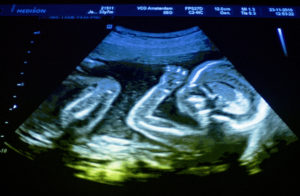Deep learning ultrasound device to estimate the gestational age of a fetus during pregnancy

In many low/middle-income countries (LMICs) settings associated with high-risk pregnancies, women attend their first antenatal care visit late into pregnancy (>20 weeks) or during the time of delivery.
Reliable ultrasound measurements of biometric data requires significant pre-service and in-service training and such training programs are difficult to access in these settings. Furthermore, access to ultrasound machines is limited in most LMICs. However, affordable and portable models do exist.
Measuring head circumference (HC) is the clinical standard for the gestational age (GA) estimation in the second and third trimester.
In the absence of associated anomalies, the fetal trans-cereballar diameter (TCD) is relatively protected from the influence of fetal growth restriction. Its growth is reliably GA-dependent with little variability throughout pregnancy.
These factors make it difficult to implement evidence-based interventions, such as corticosteroids administration for fetal lung maturation.
Oxford technology
A clinical state-of-the-art model would select an appropriate imaging plane using an ultrasound probeto allow doctors to see problems with the fetus without needing to make an incision. The visual assessment of imaging planes is time consuming, subjective and requires significant training to do well.
Scientists at the University of Oxford have developed a proof of principle low-cost ultrasound-based ‘AI-enabled’ GA estimation device based on the TCD intended for non-expert sonographers.
This approach has multiple advantages over conventional technologies – it is primarily designed for ease of use of end-user so minimal training is required and uses state-of-the-art deep learning approaches to automate measurement of GA.
about this technology

